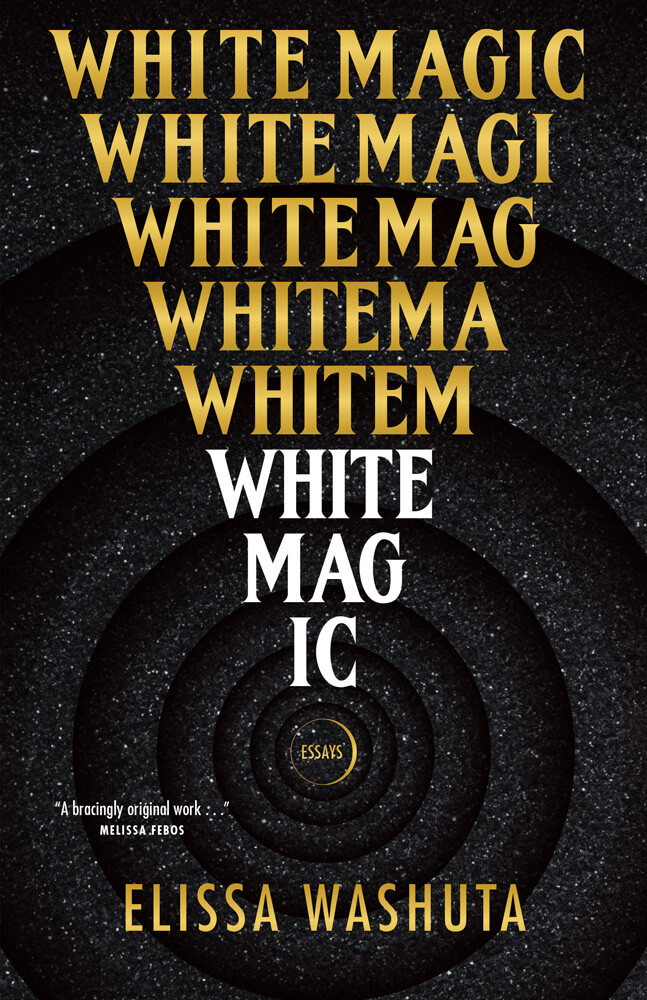- April 27, 2021
- By Sala Levin ’10
In a past version of her life, after enduring a wrenching breakup, Elissa Washuta ’07 would have done what she always did when she wanted to float away from her feelings: have a drink or three. But after the split she chronicles in her new book, “White Magic,” she turned to a different way of coping: the world of witchcraft, tarot, astrology, spells and the mystical.
“It was part of a tool for getting sober because when I was drinking, if something was really hurting me or frustrating me or bothering me … I could just change the way I felt,” said Washuta. “When I couldn’t change the way I felt (through drinking), my control issues remained. And so I was like, ‘Well, what if I can just change what happens in the universe by casting spells?’”
Both an enrolled member of the Cowlitz Indian Tribe of Washington State and a Catholic New Jerseyan, Washuta understood how tangible items could be invested with ritual and meaning. “The role of imagery and symbolism and objects in Catholicism is something—an attachment to those things is something that I carried with me” even after no longer practicing the religion, she said.
 Washuta’s fourth book, “White Magic,” published by Tin House and released today, features essays, casual second-person addresses to the reader, online memes and analysis of Fleetwood Mac’s “Little Lies,” all delivered in a mélange of techniques and styles. Its formal inventiveness wasn’t surprising to Maud Casey, UMD English professor and a mentor of Washuta’s since supervising her undergraduate thesis.
Washuta’s fourth book, “White Magic,” published by Tin House and released today, features essays, casual second-person addresses to the reader, online memes and analysis of Fleetwood Mac’s “Little Lies,” all delivered in a mélange of techniques and styles. Its formal inventiveness wasn’t surprising to Maud Casey, UMD English professor and a mentor of Washuta’s since supervising her undergraduate thesis.
Now an assistant professor of English at Ohio State, Washuta was “always really aware of the importance of form and the way that form creates meaning,” said Casey. “She’s just a really rigorous, playful, deeply intelligent writer.” A write-up in Kirkus Reviews agrees, calling the book “a fascinating magic trick of a memoir.”
Washuta’s interest in the occult was fueled in part by a contemporary source: the 1996 teen witch movie “The Craft.” “I remember seeing it with a friend and deciding that I had to be a witch,” Washuta said. “They were so cool.”
Her youthful curiosity persisted—and mixed with a deeper sense of her place in the world as a young woman. “Some girl at school once had a mood ring,” Washuta writes in the book. “We girls were quiet about it the way we were quiet about the rolled waistbands of our uniform skirts, which we concealed with the loose overhangs of tucked-in polos. Both were kinds of witchcraft the nuns forbade: spells done with sacred tools, the conjuring power of our hips.”
Though she tried to search on the still-young internet for spells then, it wasn’t until after college that Washuta began cultivating witchier communities: a therapist who practiced astrology, friends who explained how tarot cards worked, websites that described how to cast spells by carving wishes into burning candles.
“It was entirely doable,” Washuta said. “I didn’t need to be initiated in the woods by a coven.”
A Native person invested in the continuation of Native spiritual practices, Washuta uses “White Magic” to delve into the current trendiness of all things occult: burning sage, reading tarot cards, proclaiming on Twitter that “it’s Taurus season!”
Part of the appeal of mysticism on mediums like Instagram, Twitter and TikTok, Washuta speculates, is its inherent visual lavishness. Crystals, cauldrons and chalices are “aesthetically so rich,” said Washuta, who encourages non-Native people to respect traditional practices by sticking to “subtler witchcraft” like tarot and astrology.
Ultimately, Washuta’s witchcraft led to a sense of calm that she once found only in drink. “The book is about feeling and intuition and learning how to understand feeling,” she said. “It is so much about just how to sit with oneself and how to find a way to have hope and to be okay with sadness and to know that it’s all going to be okay.”
Topics
People